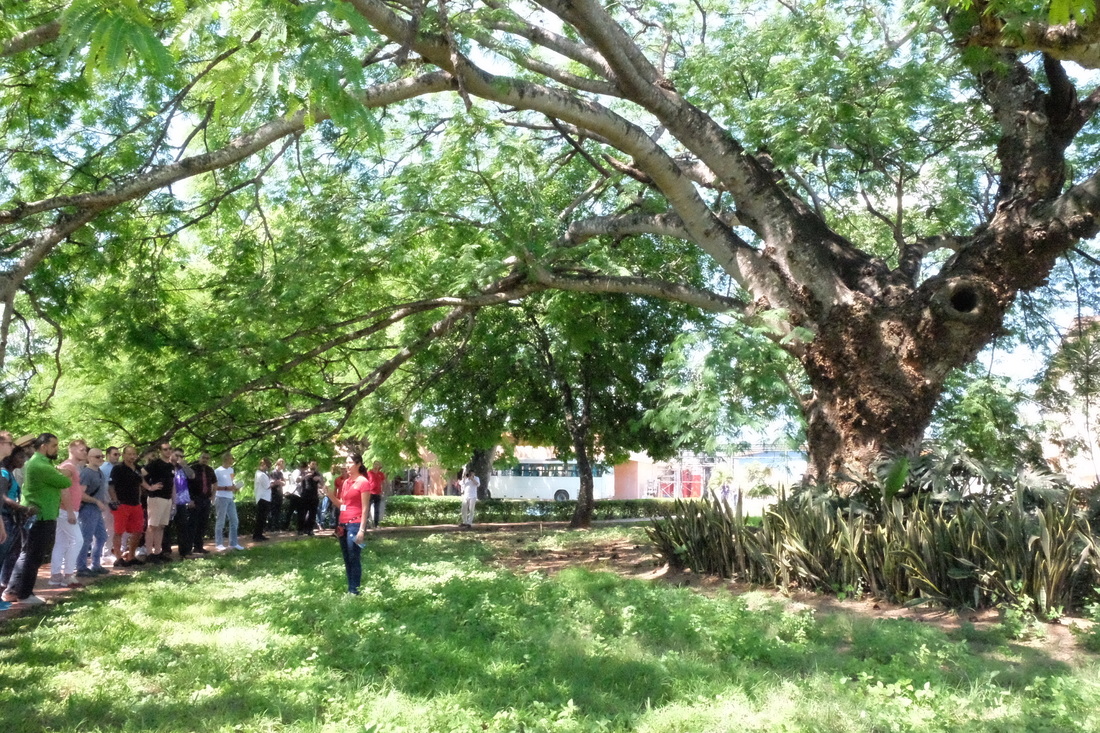Recently I was whisked away from the grey skies of London, to subtropical Cuba, tasked with finding out all about Cuban rum at the hands of its masters, Havana Club rum. One of the highlights of the trip was a visit to the Havana Club distillery, not normally open to the public!
Cuba has been known as the Isle of Rum since it was first introduced to sugar cane by Christopher Columbus in 1493. At one point there were over 1,000 distilleries in Cuba, and nowadays Havana Club embodies Cuban rum, exporting to over 120 countries and selling over 50 million bottles a year. That's some serious volume churning out of the island's distilleries, and some serious pressure with every bottling! I was excited to head down and check it out…
Our visit began in true Cuban style…with a convey of classic cars arriving to take us out into the Havana countryside, where the distillery is. Pretty darn swish.
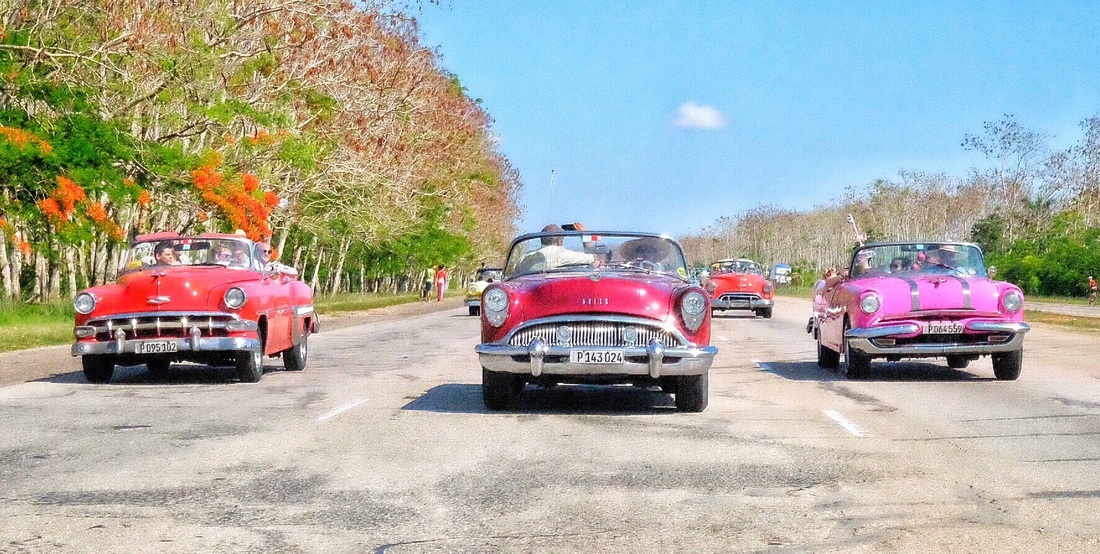 On arrival we were led around the facility, beginning at this ancient tree slap bang in the middle of it. If you're surprised to see such a leafy feature in what is essentially a working factory, so was I. We were told however by the distillery manager that it was intentional – they actually redesigned the whole factory plan to retain it so that they didn't disturb the natural environment too much!
On arrival we were led around the facility, beginning at this ancient tree slap bang in the middle of it. If you're surprised to see such a leafy feature in what is essentially a working factory, so was I. We were told however by the distillery manager that it was intentional – they actually redesigned the whole factory plan to retain it so that they didn't disturb the natural environment too much!
Next onto where the magic happens….rum distillation. It begins its life as raw sugarcane which is pressed to release its juice, 'guarapo', for boiling up into molasses. This sticky mix is fermented with yeast and pure water to become 'batición', which is then distilled in the long continuous columns shown here. Distillation produces a fiery, clear liquid, 'aguardientes' – the true soul of Havana Club rum.
This liquid is then aged in various oak barrels that used to hold whiskey and bourbons. This give the rum its colour, aroma, texture and complexity as the alcohol molecules interact with the wood, stripping sugars and flavour compounds from it over time as the cask 'breathes'. The challenge of the Havana Club rum masters is to manipulate this process so that every single bottle tastes the same – quite the task given the variances in sugarcane crops, casks, temperature, water….et cetera et cetera. No surprise they have to train for at least 15 years before being appointed. Every rum is aged for a minimum of three years, often much longer, and they lose between 7-10% of each barrel due to the heat in Cuba – 5 times as much as whisky in Scotland! This loss is called the Angel's Share and you can smell it in the air as you enter the ageing warehouses.
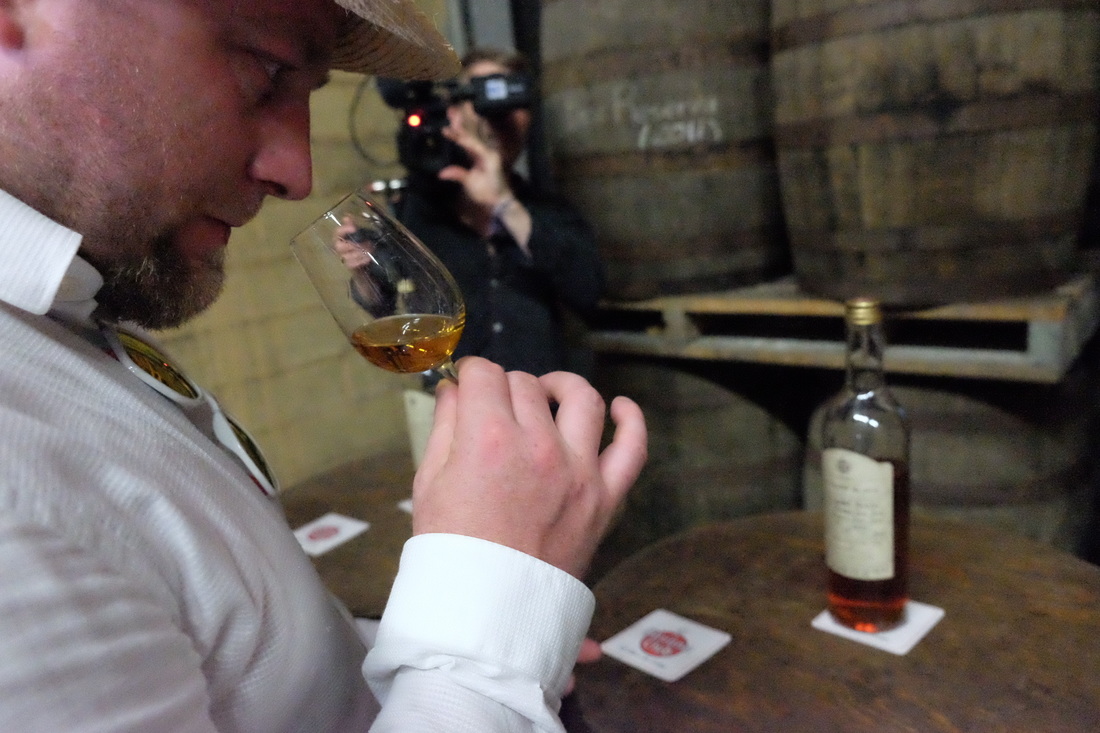 We toured these spectacular warehouses, marvelling at row after row of carefully maintained rum barrels and even sampling from a few of them!
We toured these spectacular warehouses, marvelling at row after row of carefully maintained rum barrels and even sampling from a few of them!
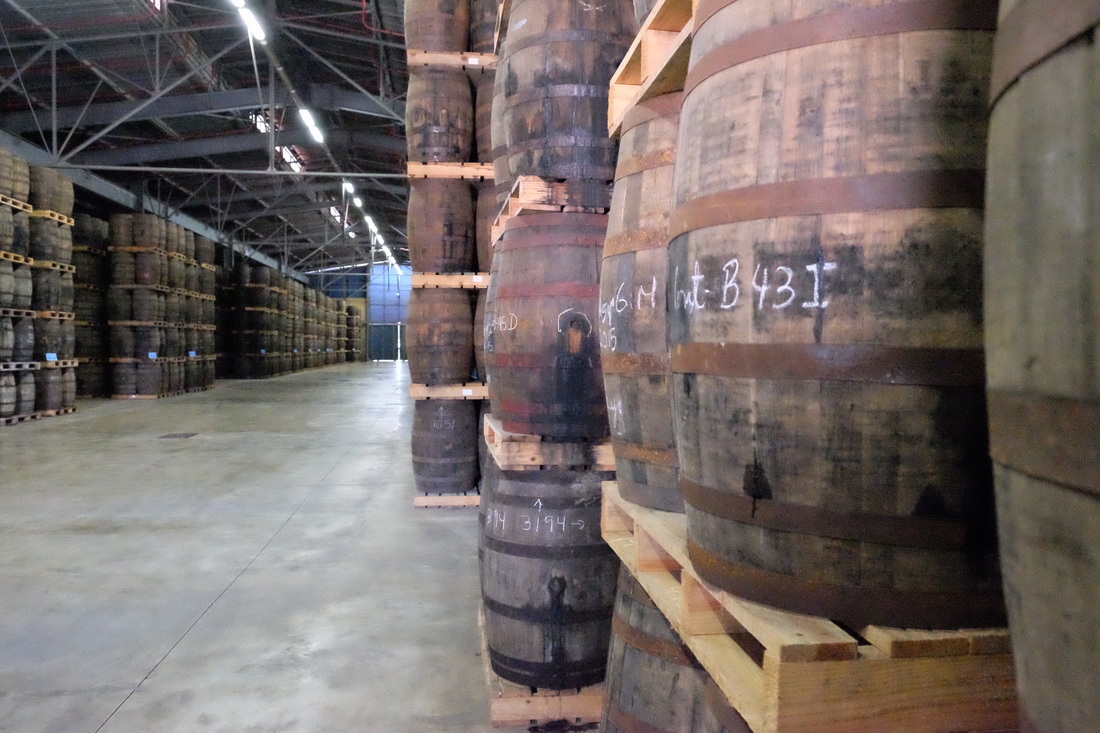 Samples of every base are kept in Master of Rum, Asbel Morales', rum library so that it can be consulted to ensure consistency to the Havana Club brand.
Samples of every base are kept in Master of Rum, Asbel Morales', rum library so that it can be consulted to ensure consistency to the Havana Club brand.
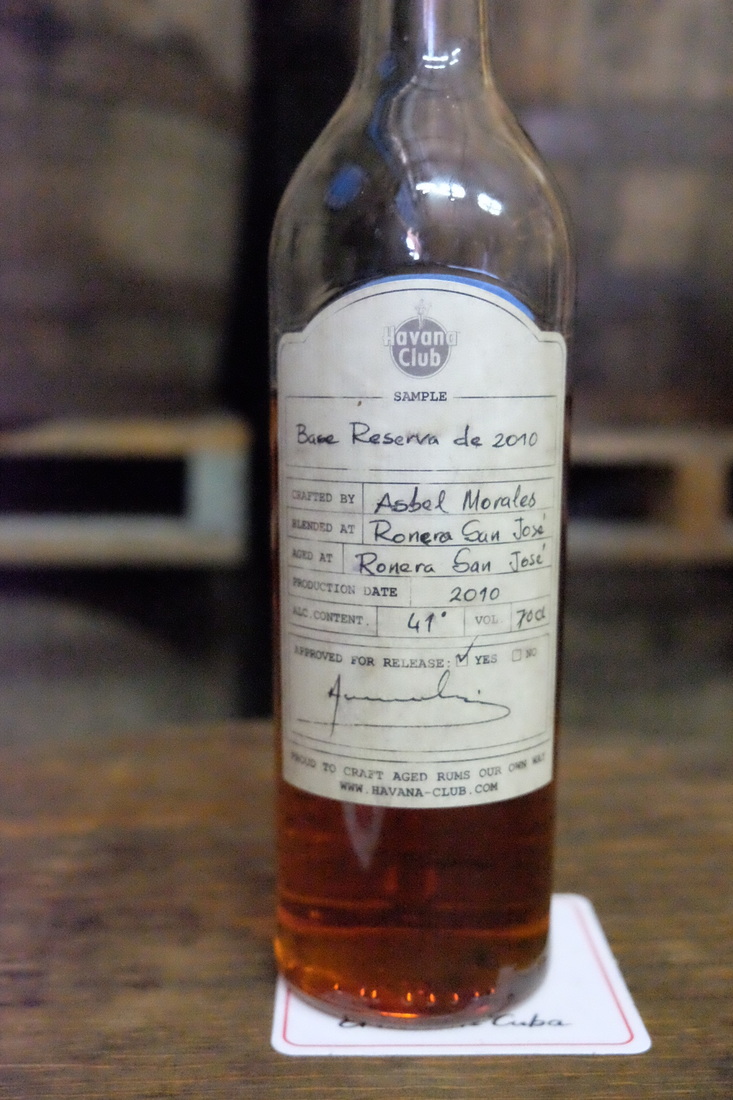 Finally it was on to the tasting room to sample some of the Havana Club rums, tutored by Asbel himself. There we tried a very rare base rum – their Centenario which is used as the baseline for all future rums. Fragrant with tobacco, coffee, sultanas and rich with natural sweetness, it was a delicious and very special sip.
Finally it was on to the tasting room to sample some of the Havana Club rums, tutored by Asbel himself. There we tried a very rare base rum – their Centenario which is used as the baseline for all future rums. Fragrant with tobacco, coffee, sultanas and rich with natural sweetness, it was a delicious and very special sip.
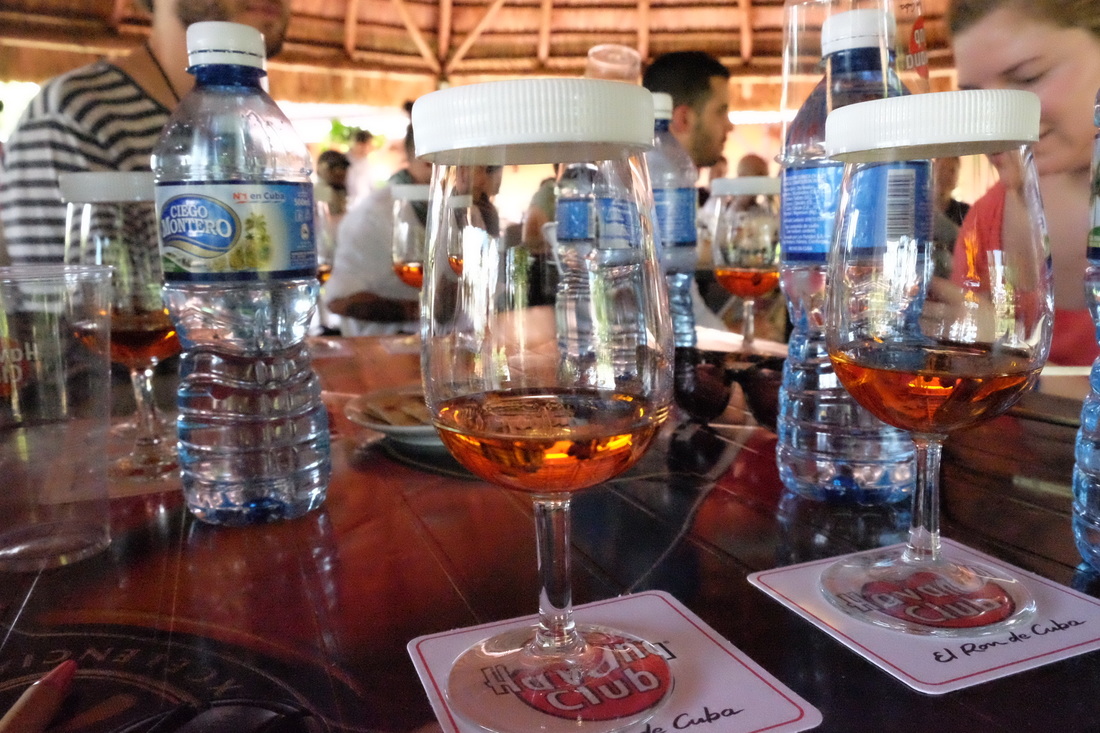 We finished our visit with lunch at a local farm near to the distillery. This was probably the best meal I had in my entire trip to Cuba. Simple fare, rooted from the farmer's garden and cooked fresh over a wood burning BBQ – just gorgeous. Made more so by a bottle of Havana Club Maximo Extra Anejo being passed around. This is another rare rum made from blending their oldest and finest rums. Only 1000 are made a year and they retail from around £1,000 pounds!
We finished our visit with lunch at a local farm near to the distillery. This was probably the best meal I had in my entire trip to Cuba. Simple fare, rooted from the farmer's garden and cooked fresh over a wood burning BBQ – just gorgeous. Made more so by a bottle of Havana Club Maximo Extra Anejo being passed around. This is another rare rum made from blending their oldest and finest rums. Only 1000 are made a year and they retail from around £1,000 pounds!

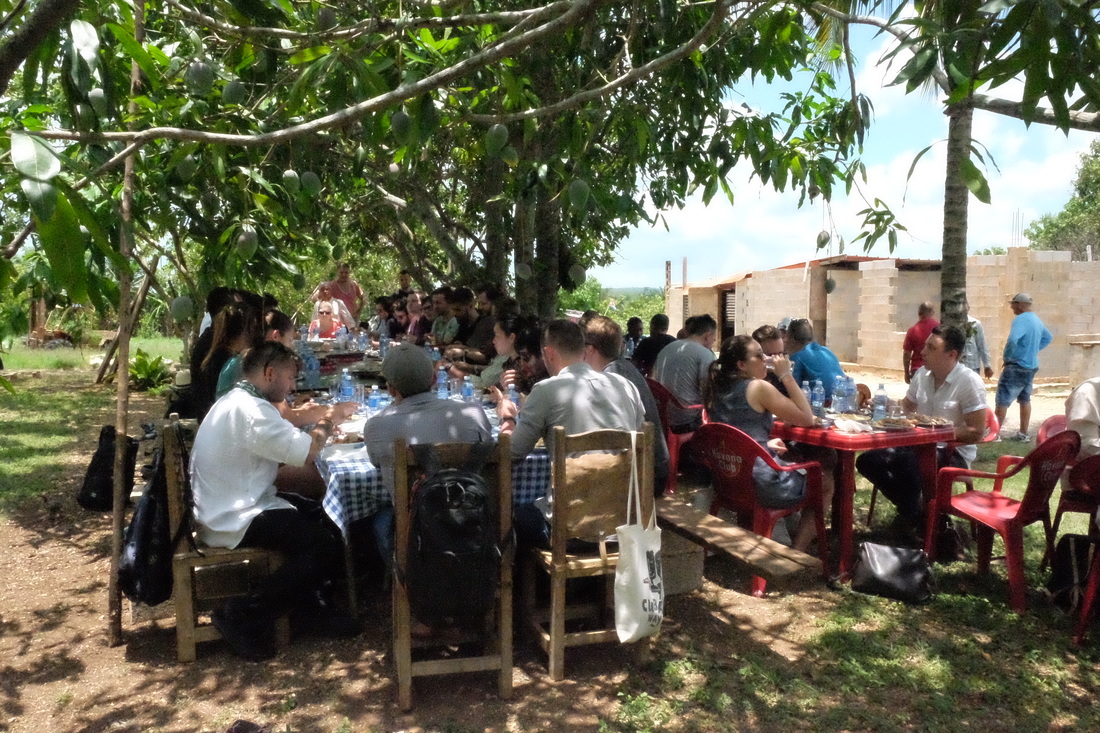 So ended an incredible day at the Havana Club distillery and one that now influences every sip I take of their rums. Having been there, having walked in the shadow of that ancient tree, sniffed in the smell of slowly escaping rum in their warehouses, that rum tastes ever sweeter. They market themselves as the rum of Cuba, 'El Ron de Cuba'….now I understand why.
So ended an incredible day at the Havana Club distillery and one that now influences every sip I take of their rums. Having been there, having walked in the shadow of that ancient tree, sniffed in the smell of slowly escaping rum in their warehouses, that rum tastes ever sweeter. They market themselves as the rum of Cuba, 'El Ron de Cuba'….now I understand why.
havana-club.com/

